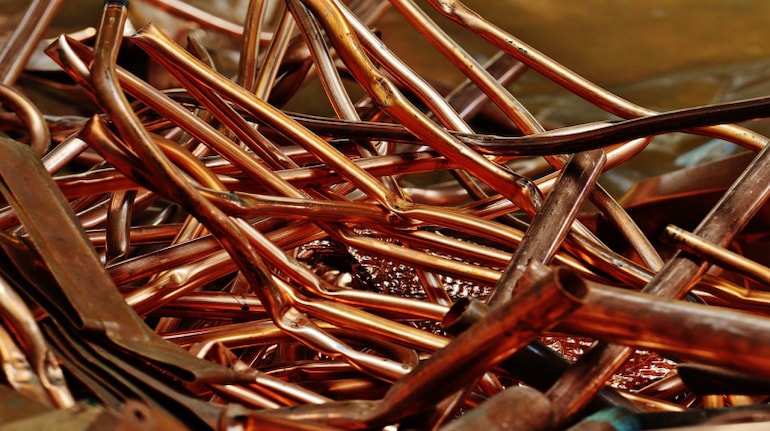



India Ratings on Thursday revised its outlook on the country's base metals sector to negative from stable for the coming fiscal, stressing that the coronavirus outbreak, continuing US-China trade dispute and subdued global demand would keep prices low in the near term.
Prices may gradually improve as the pandemic is contained and the second phase of US-China trade negotiations is concluded, the rating agency said in a statement.
As part of its study, the agency has covered the copper, zinc, aluminium and coal sectors.
India Ratings and Research (Ind-Ra), however, has maintained a stable outlook for FY21 on the key rated sector entities, given the majority of them have an adequate liquidity position, strong financial flexibility, a low-cost position and a dominant market position.
The key sector participants include Vedanta, National Aluminium Company and Hindalco Industries.
"Ind-Ra expects the entities to record, on a consolidated basis, revenue growth of 5.5-6 per cent year-on-year, EBITDA margins in the range of 18-19 per cent and steady net leverage at around 3x in FY21," it said.
The outbreak of coronavirus shall result in a temporary zinc inventory pile up, as against the low levels at end-2019.
Until the containment of the virus outbreak, zinc prices will be low and treatment charges and refining charges will moderate; and both with gradually reverse as the impact of the pandemic reduces.
The zinc market is expected to be in the marginal deficit over FY21.
Copper prices will also be low due to the coronavirus outbreak and will be supported once the epidemic is contained.
Treatment charges and refining charges shall be high during this period due to limited smelter availability due to higher inventories of both refined copper and sulphuric acid (by-product) and would subsequently fall.
From a domestic standpoint, India shall continue to be a net importer of copper in FY21, pending the resumption of Vedanta's copper smelting facility.
The agency expects aluminium prices to experience downward pressure, due to a week-end user demand and surplus market supply, despite Chinese environmental constraints.
The heightened US-China trade tensions or a surge in Chinese production in 2020 upon the containment of the new coronavirus may trigger the prices to dive down further.
India is dependent on imports of alumina and will have to find newer sources, it said.
Coal price weakness is likely to continue. Higher domestic volume output remains dependent on the availability of evacuation infrastructure.
Coal India Limited's volumes are likely to remain stable and coal cost would gradually improve over the mid-term as rake availability improves.
Despite the recent regulations to privatise the coal sector, Coal India's monopoly is likely to continue over the near term due to the time duration required for new entrants to obtain regulatory approvals and to set up the logistical and infrastructure necessary for commercial production.
Thermal coal imports shall gradually reduce the privatisation of the sector. However, coking coal imports are likely to be high over FY21, as India increases its steel production, the agency noted.
Discover the latest Business News, Sensex, and Nifty updates. Obtain Personal Finance insights, tax queries, and expert opinions on Moneycontrol or download the Moneycontrol App to stay updated!
Find the best of Al News in one place, specially curated for you every weekend.
Stay on top of the latest tech trends and biggest startup news.